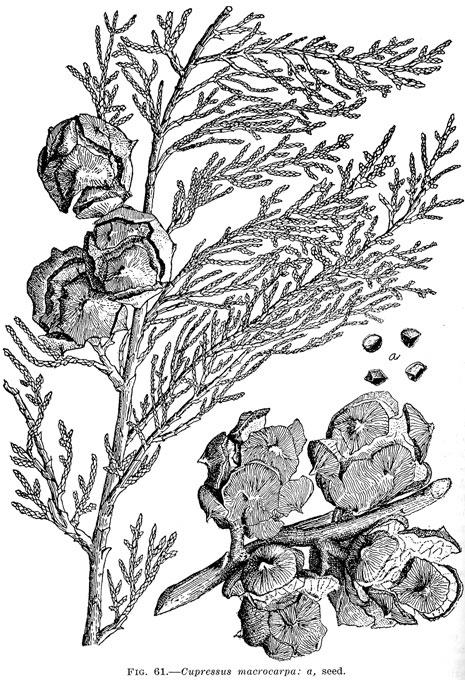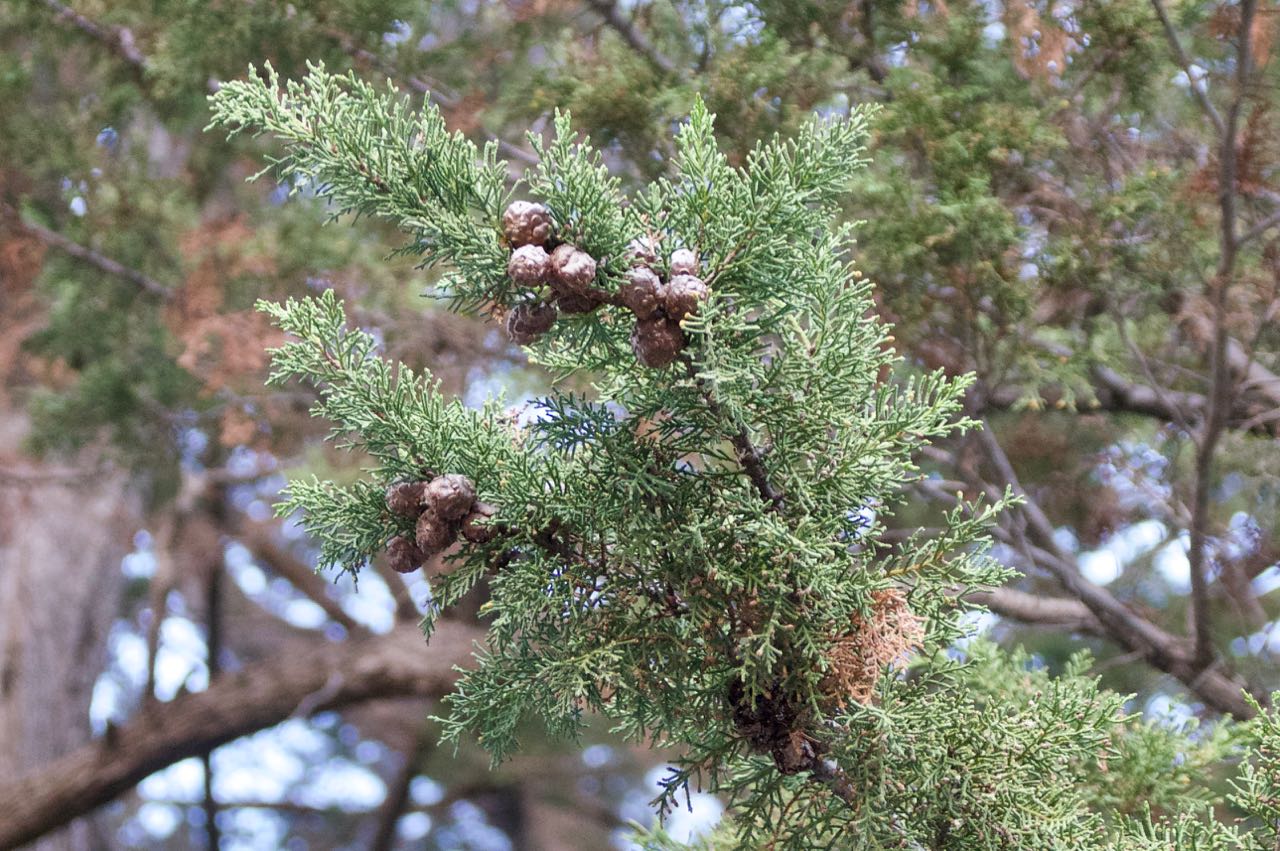Hesperocyparis macrocarpa
 Monterey cypress
Monterey cypress
Away from its foggy coastal habitat this tree does not always do well; specimens can be seen here and there that have been killed by cypress canker, a fungus that is following Monterey cypress plantings around the world. The branchlets give a pleasant aroma when crushed.
On central campus examples are at the southeast corner of 505 Lasuen Mall, six (perhaps) on Santa Teresa Street diagonally east of the New Guinea Garden, and a nice specimen planting just north of the Thornton Center, 379 Santa Teresa. The identification of the aforementioned trees is questionable, and the names Gowen cypress (Hesperocyparis goveniana, syn. Cupressus goveniana) and Santa Cruz cypress (Hesperocyparis abramsiana, syn. Cupressus abramsiana) have been put forward for one or more of them. The taxon of the lone remaining planted cypress at Jasper Ridge Preserve also remains a question. In addition to the well-documented, early extensive campus plantings of Monterey cypress by Thomas Douglas, there are also records for Cupressus goveniana, Cupressus guadalupensis, and Cupressus macnabiana (see Species Lost).

One of the old cypresses after which “Pine” Hill was named stands at 858 Lathrop Drive. Once the most widely cultivated tree at Stanford, 200 or more Monterey cypresses were formerly maintained in and around the Quad but few remain.
In 1975 Palo Alto reported 50 to 100 dead or dying. Monterey cypress should not be planted on campus. The San Francisco Presidio, now a 1480-acre national recreation area, has a 3800-tree forest, planted a century ago, that is flourishing under the foggy conditions that it likes. However, the forest is threatened by a proposal from the United States Fish and Wildlife Service to restore the sand dunes that once covered the Presidio (New York Times, March 9, 2003). These dunes also covered the site of Golden Gate Park (see Acacia longifolia).
Illustrations: Monterey cypress at Jasper Ridge Biological Preserve.
Name derivation: Hesperocyparis – Latin, Western cypress; macrocarpa – large fruit.
About this Entry: The main text of this entry is from the book Trees of Stanford and Environs, by Ronald Bracewell, published 2005. John Rawlings subsequently added notes on the questionable IDs and Jasper Ridge. Name udpated to Hesperocyparis macrocarpa (Sep 2017, SP).





